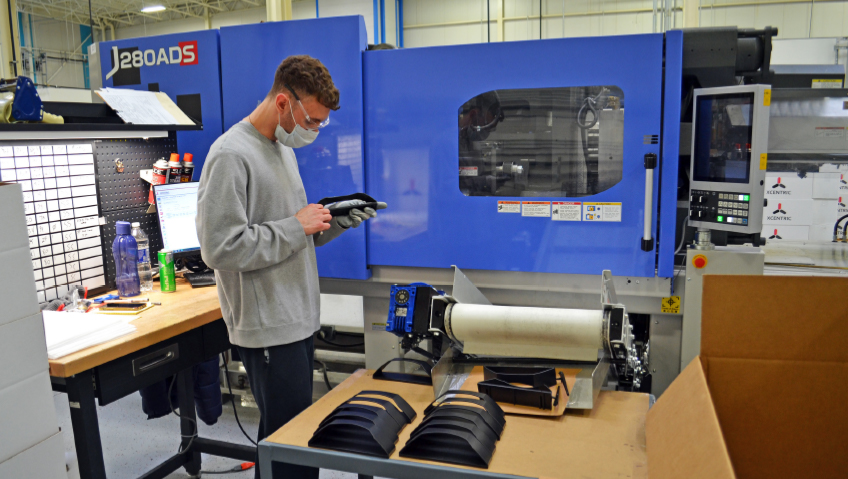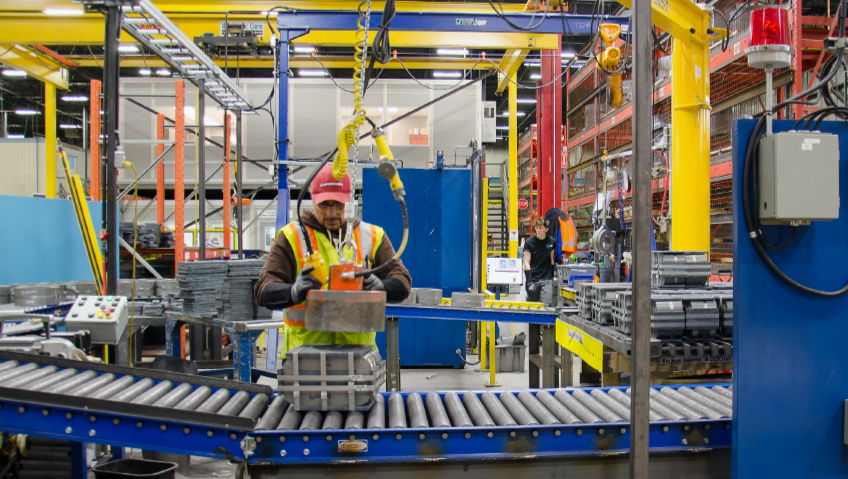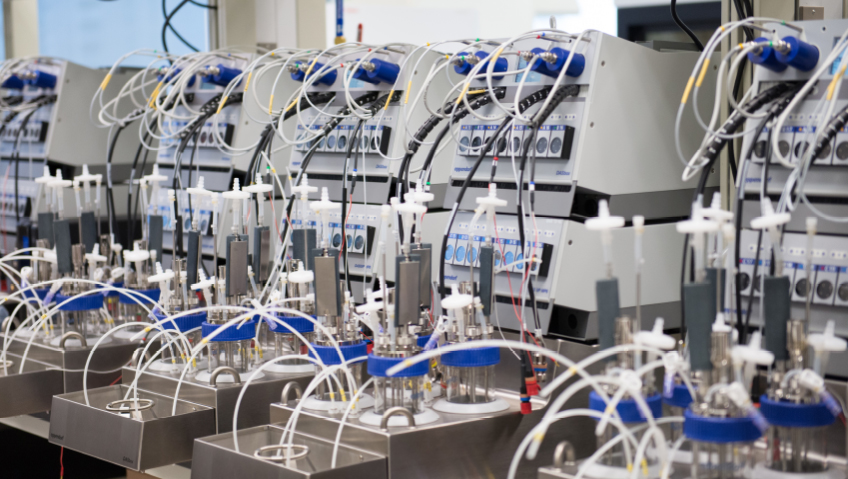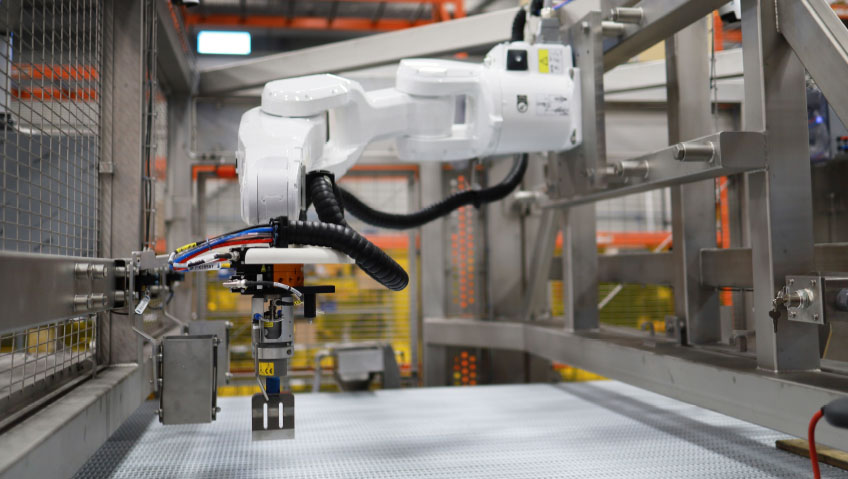Buffalo, New York-based Innovative Transportation Services (ITS) is an asset-based transportation provider and a subsidiary of Sonwil Logistics, which has been serving customers in western New York State for more than thirty-five years. Business in Focus spoke with ITS in April 2019 to learn about the forward-thinking company’s commitment to technology, innovation, and green initiatives. We caught back up with the team this month to learn what has developed since then.
The company has been busy implementing the most advanced technology to monitor trucks in real time. ITS now uses the latest electronic logging device (ELD) from Samsara. The solution helps it prevent service violations and meet compliance requirements, increases efficiency, and empowers drivers with helpful information they can easily access on company-supplied tablets.
“Basically, everything is pushed to our drivers,” says Director of Transportation James C. Hotnich. “They can open up their tablets and they can see everything. They can see their pick up numbers, reference numbers, delivery numbers, their appointments, whatever it may be.”
The technology makes the entire transportation process smoother and saves drivers time and extra steps. “It limits the amount of time that they need to come in and talk to us,” says Asset Operations Manager Jacob Mazzatti. The technology also helps drivers maintain contactless delivery requirements to prevent the spread of COVID.
The positive impact of the new ELD has been felt throughout the company. Drivers particularly appreciate the insight it gives them. “They can see a few days out – they’re not just going day by day,” Mazzatti says. “They can plan their weeks accordingly.” This improves driver quality of life, which is important to management. “They have lives as well,” he says. “It’s not just all work and driving.”
Drivers also enjoy the convenience that Samsara’s ELD solution brings. They can upload receipts and other documents on the spot using a convenient app, eliminating the need to keep up with lots of papers and remember to submit them later. This is especially handy when drivers have to use their own credit card for a work-related expense and want to take care of the reimbursement request right away.
Customers also benefit from the new ELD solution. “We’re able to give live updates to our customers,” Hotnich says. Gone are the days when customers waited and wondered when their shipment would arrive. For example, “a couple of weeks ago, we had some weather up in the northeast,” he remembers. “A lot of roads were shut down. With the technology that we have, we were able to pretty much send live updates to our customers.”
All they have to do is “click on a link, and they can see exactly where the truck is.” The technology delivers constant communication, taking all the guesswork out of the process from the dispatcher to the customer.
The company has also embraced new technology for greener, more efficient operations. The last time we spoke, the company had just purchased its first electric vehicle. In fact, ITS was one of the first to buy a purely electric terminal truck from Orange EV, an industry-leading start-up specializing in yard trucks to move trailers within company facilities.
The solution was such a success that ITS followed up by buying a second, fully-electric, yard truck to use at its Buffalo facility. “The drivers are very happy with it,” Hotnich says.
ITS managed to come through the pandemic and shutdown unscathed. “Luckily COVID did not really impact us,” he says. “We actually received more business through COVID.” This was primarily due to ITS dealing with products that remained in demand.
The company transports a wide variety of essential foods, from chicken and milk to cereal, produce, and essential paper products. “Obviously, everyone was eating and drinking,” Hotnich says. As a result, ITS jobs remained secure. “We never had to lay any office staff off. No drivers were laid off.”
With business booming despite the difficult times, geographical expansion is very much on the table. The company’s over-the-road operations have expanded as far north as Maine, as far south as South Carolina, and as far west as Minnesota. The team regularly transports shipments down to Kentucky and the Carolinas and west to Indiana, Ohio, and Michigan. “We’re looking to expand that more and more,” Mazzatti says.
The team relies on two transport operations to cover the expanding workload, ‘every other day’ and ‘five and two’. ‘Every other day’ drivers leave one day and return home the following day, staying within about five hundred miles from the Buffalo headquarters and driving about seven hours a day to cover the company’s regional business. The schedule gives these drivers plenty of time to be home with their families.
‘Five and two’ drivers travel beyond the New York region, driving for five days at a time and then returning home for two days. “The guys like that because they get a whole forty-eight hours off,” Mazzatti says. Having options helps keep drivers happy because they can work the type of schedule that is best for them and their lifestyle.
This flexibility is important because keeping drivers happy is crucial to the company’s success. Hotnich says the biggest challenge the company, and the industry at large, faces is an ongoing driver shortage. “There’re a lot of different avenues that we’re looking at to try to combat that,” he says.
ITS has always been committed to employee satisfaction, which has been particularly important during the current driver’s market. “Jake [Mazzatti] works with all the drivers. If there’s anything they need, [even if] it’s short notice, we try to work with them as best as possible because, while we have grown and continue to grow, we want to make sure that our values at the core of being a family-owned business are held true. We don’t want employees to be, you know, employee ID 123. We want them to be James; we want them to be Jake; we want them to be Claire. We want to have a good, open relationship with all of our drivers.”
This applies regardless of a driver’s route or hours. “It doesn’t matter if it’s an over-the-road driver that Jake might see once a week,” Hotnich says. “If that driver has something going on, Jake’s door and my door’s wide open. So if they have something going on, they can just come in and talk, whatever’s on their mind. Same thing with local drivers – anything that’s going on, we have an open-door policy. We listen.”
One thing that management listened to was the drivers’ request for a lounge. The company is renovating the company’s main terminal in Buffalo to create a space for drivers to relax, unwind, and freshen up after a long day or days on the road. The new lounge will include showers, televisions, couches, and other requested amenities.
ITS is considering partnering with a local school to help funnel new drivers to the company or it might even launch its own school. Either way, the goal is “to get that young talent pool in the door and show them that, you know, it’s not your father’s or your mother’s trucking industry,” Hotnich says. “A lot has changed – a lot of technology.” For one thing, the hours are far better than in the past. “It’s not [that] you’re out thirty, thirty-five days in a row,” he points out, adding that the compensation is generous. “You can make a good living being a truck driver.”
Perhaps most importantly, drivers have the satisfaction of knowing that they are making a positive impact, especially during tough times. “Our drivers had a hand, like other trucking companies through this pandemic, to literally keep America moving,” Hotnich says. “No matter how small it seems that their contributions are, all the drivers have made a huge impact across the country.”






